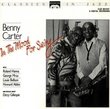| All Artists: Gustav Mahler, Leonard Bernstein, New York Philharmonic Title: Mahler: Symphony No. 1 - Titan / Symphony No. 10 - Adagio Members Wishing: 0 Total Copies: 0 Label: Sony Release Date: 11/24/1998 Genre: Classical Style: Symphonies Number of Discs: 1 SwapaCD Credits: 1 UPC: 074646073223 |
Search - Gustav Mahler, Leonard Bernstein, New York Philharmonic :: Mahler: Symphony No. 1 - Titan / Symphony No. 10 - Adagio
 | Gustav Mahler, Leonard Bernstein, New York Philharmonic Mahler: Symphony No. 1 - Titan / Symphony No. 10 - Adagio Genre: Classical
No Description Available No Track Information Available Media Type: CD Artist: MAHLER,G. Title: SYM 1/10 Street Release Date: 11/24/1998 |
Larger Image |
CD DetailsSynopsis
Product Description No Description Available No Track Information Available Media Type: CD Artist: MAHLER,G. Title: SYM 1/10 Street Release Date: 11/24/1998 Similarly Requested CDs
|
CD ReviewsA good 1st symphony, a stupendous 10th Adagio. Nicholas Fox | 02/03/1999 (4 out of 5 stars) "This CD is a case of the good versus the great. Though Leonard Bernstein may have had some worthy interpretive insights during his years with the New York Philharmonic, I've always felt he was let down by the shabby playing and recorded sound he was given. It's strange, since the same Columbia crew that worked on Bernstein's recordings also worked on Szell's and Ormandy's, but the difference is astounding. The latter conductors recordings, even from the early 50's, never cease to astonish for their clarity, realism, and depth. Bernstein's recordings, however, are almost always tinny and shabby. The Mahler 1 on this recording is a good example. The interpretation is a powerful, flowing one, but the New York Philharmonic just plain doesn't sound good. The Mahler 10 Adagio is in a different universe. This recording was made in 1975, when Pierre Boulez was music director of the NY Phil, and his exacting standards of clarity and execution clearly aid in making this one of the great Mahler recordings ever made. The New York Philharmonic has never played or sounded better, and Bernstein's painstaking, searing interpretation is one for the ages, without the bizarre theatricality of his early recordings or the drawn-out marathons of his last years. Buy this one for the 10th." Tremendous Interpretations grandpiano_57 | Burlington, CT USA | 07/12/2000 (5 out of 5 stars) "I must say that this CD is absolutely sublime. Unlike the previous reviewer, I felt symphony No. 1 comes across as fresh and exciting. I also find the sound to be quite good and the intonation of the New York Philharmonic is world class. Mahler's 1st has many colors and offers moments of breathtaking beauty and mystery. From it's almost Pastoral opening, through the effervescent Scherzo and into the darker recesses of the last movements, it is a late 19th century jewel. The music, as conducted by Bernstein, is particularly alive and engaging. Also, the 10th Adagio is a masterpiece. It's power sends shivers throughout. This most be a definitive recording of the only movement Mahler got to complete of his last Symphony. In summary, nearly 80 minutes of incredible music that captures a great Mahlerian conductor and a superb orchestra. A highly recommended purchase." Required Listening Jeffrey Danowitz | Ramat Aviv, Tel Aviv Israel | 06/28/2008 (5 out of 5 stars) "I grew up on Mahler's first with Bernstein and the Concertgebouw which is a great performance. It was also one of the first CD's that I bought ever. Only now (after many many years) did I get this performance with the NYP. While the "style" is perhaps the same as the Concertgebouw, there is a certain amount of freshness and uncontrolled power that makes this performance uplifting and breathtaking. The performance is spotless the conducting along with the phrasing and the tempi are perfect. The inner movements are performed with full vigor -- the "dance" in the second movement is zesty and energetic an the "funeral" of the third movement puts one in exactly the right mindset for the death of the Titan. The first movement, sounds like nature (birds and wind and flowers) and comes to the final blowup that lets your spirit soar. The final movement is DARK and gloomy and has the recapitulation of the first movement perfectly inserted. The mixture of gloom and that beautiful, heart-breaking second theme is perfectly conducted and minipulated and "staged" by Bernstein. This is a free flowing, high momentum performance of this symphony that is hard to top. Definate 5 star performance.
The Adagio from the 10th symphony is perhaps the pearl of this disc. I have heard 2 other performances of this, both by Sir Simon Rattle (Bournemouth Symphony Orchestra and Berlin Symphony Orchestra) which are both great performances. However, this performance is really a treat. Bernstein really understood what was going on here. Both Rattle performances seem as if they were incompetely orchestrated. This Bernstein performance puts everything into perspective. Even the massive dissonances towards the end of the movement are perfectly in place and "make sense". Putting together the first symphony and the last (incomplete)symphony show how Mahler's style developed during his lifetime. The first symphony is basically his most accessible symphony which is full of harmony and without too much dissonance. Yes, it takes you on a trip into another world, yet it is fairly "standard" in nature. The last symphony is a lesson in harmonic dissonance and progressions. The orchestration is completely difference in these 2 symphonies. The early one being very brassy and the later one being generally lighter with deeper harmonies and more challenging progressions and textures. I would recommend this disc without hesitation. It is not expensive, and the sound is great. I would give the first symphony 5 stars but I would definately give the performance of the 10th (Adagio) many more stars if I could. Enjoy :)" |

 Track Listings (22) - Disc #1
Track Listings (22) - Disc #1








